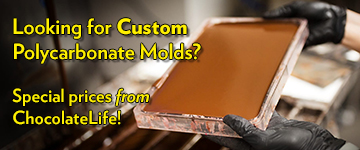Sebastian -
While I don't make the point in the presentation that some of the chemicals can't be directly experienced, I do make all of the rest of the points, using analogies I learned as an art student about color theory.
The concept is called the "theory of simultaneous contrast," which basically says that any colors next to each other are perceived a particular way. If you change any one of the colors, your perceptions of all of them is going to change. You can change the color itself (shade, tint, and/or hue) and/or you can change the area of color relative to the other colors.
Flavor perception works the same way. It's not just the presence of specific aroma and flavor chemicals, the total quantity and their relative proportion are also important. As you point out, the presence of one aroma chemical and alter the perception of another - the combination is different from each separately. Simultaneous contrast.
More generally to the ChocolateLife community -
All of this is moderated by the way in which aromas and flavors are released in the mouth over time by heat, a process which is in turn moderated by saliva and complicated by the fact that some compounds are water soluble and are encapsulated in fat. And, finally, there are some "tastes" that are actually sensations - astringency is one.
Another point I make in the words that accompany the slides is that each one of these areas is worthy of careers' worth of study. What I am doing is providing an overview that provides a peek at the level of complexity involved.
How does soil micronutrient chemistry affect flavor? We know it does, but I don't know of any credible research that definitively points to the presence (or lack) of a particular nutrient in the soil that leads to the presence of particular chemicals in beans (by what mechanism - uptake, metabolic?) that, when fermented (wild yeast? controlled?) in a particular way (time, temp)will lead to the presence of a particular set of flavor precursor compounds that, when roasted, will result in aroma and flavor compounds that when ground, refined, and conched will lead to a particular flavor being present in the final chocolate.
--
~~~~~~~~~~~~~~~~~~~~~~~~~~~~~~~~~~~~~~~~~~~~~~
@DiscoverChoc

